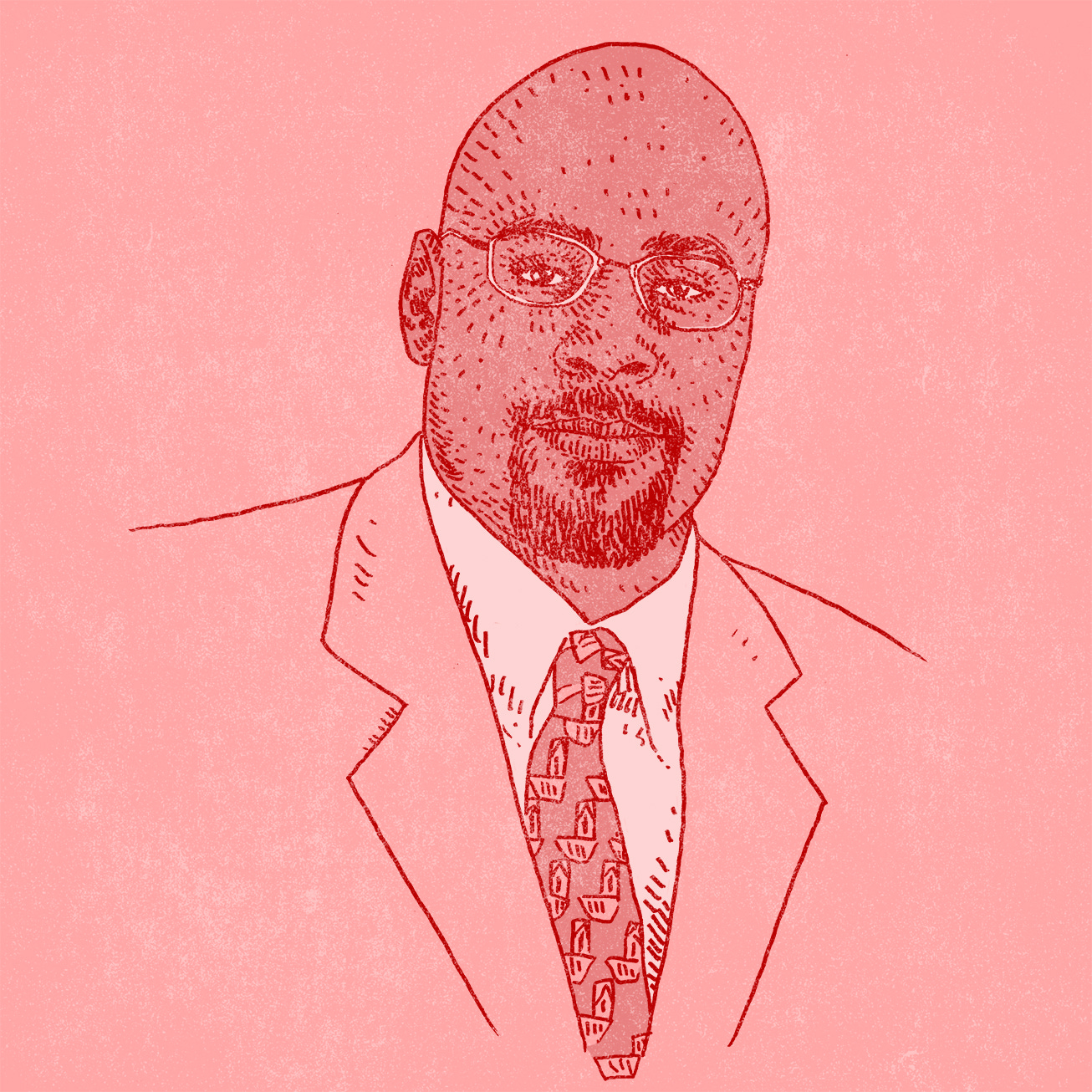The Mythological Life of Carlton Haselrig
Haselrig came out of nowhere to become the greatest wrestler in NCAA history, and a Pro Bowler in the NFL. He died last month.
Carlton Haselrig came from a mythological place in the American story -- Johnstown, Pennsylvania. He lived a mythological life.
In 1889, a dam outside of Johnstown broke after weeks of heavy rain. Suddenly the Little Conemaugh River transformed into the rushing, powerful Mississippi. It was just too much. The ensuing flood killed 2,200 people. For 150 years, the flood has been synonymous with Johnstown, a steel mill town east of Pittsburgh.
Carlton Haselrig was born in Johnstown in 1967, at the peak of the American Middle Class Dream; before the mills and factories began to shutter and before the unions were broken and before the opioid epidemic hit Western Pennsylvania. But he knew hard times. He understood from an early age, the tragic turns a life can take. Not just because of the flood either.
Haselrig’s father was an alcoholic, in and out of recovery. His mother was a drug addict. She left the family when he was five years old. But Haselrig grew up big and strong and warmhearted. His uncle Bruce, a wrestling official, passed on his love for the sport. In high school, Carlton played on the football team. There was no wrestling team, but it turned out Carlton did not need one. As a senior, he went undefeated and won a state championship wrestling as an independent.

Carlton stayed in Johnstown for college. He enrolled at the University of PIttsburgh-Johnstown. It wasn’t the biggest wrestling program -- but he trusted the coach and he felt comfortable at home. Plus, it didn’t matter who Carlton was wrestling. HIs athleticism and power transcended the concept of mere opponents. The other wrestlers were essentially interchangeable, in other words.
Pitt-Johnstown was a Division II school, but at the time DII wrestlers could compete in D1 tournaments. Over three years, Carlton won six NCAA titles: three DII titles, and three D1 titles. He compiled a college wrestling record of 143-2-1. When he was done, the NCAA instituted what became known as the Haselrig rule to prevent Division II wrestlers from embarrassing Division 1 programs the way he had.
What does a freestyle wrestling champion do after college? Carlton could have called it a career. He could have trained for the Olympics. But no, Carlton, who had not played a down of football in college, was drafted by his hometown NFL franchise: the Pittsburgh Steelers. He was taken in the 12th round -- a round that no longer even exists in the NFL draft -- as a complete longshot. But of course Carlton didn’t see it as a longshot. Soon he was a Pro Bowl offensive lineman, blocking for Dan Marino in the Hawaiian sunshine.
Carlton Haselrig climbed, one improbable step after another, to the very top of the world. He did it with grace and with that big heart and with charm and with a neverending capacity for hard and miserable work. Then he fell. Maybe it was inevitable. Maybe that kind of run just couldn’t be sustainable. Maybe a man can’t just will himself from obscurity into greatness without there being a cost.
There were signs all along. He had been in fights. He had been implicated in a sexual assault in college. (Two other students were charged.) He had been arrested for drunk driving. But now Carlton was an adult. He was a father. And he was a highly paid star in the NFL. The stakes were higher.
Carlton got drunk and drove his car up the steps of a seminary in Pittsburgh, skidding out and coming to a stop on the lawn. Maybe he was looking for something there. Maybe he had questions that needed to be answered. What are we living for? What does it mean to make the most of our time on this planet? What is the point of sports? What is the point of being great at them? Did Carlton Haselrig love playing football? Does the ability to wield a powerful body like Carlton’s make you only the more aware of your mortality? Of the harsh limits of that power?

Carlton began to disappear. Literally. He would go off the grid for weeks at a time. The disappearances cost him his job with the Steelers and then another job with the New York Jets. They cost him his NFL career. They appear to have cost him his first marriage. But they did not cost him his life. They did not cost him the love and support of his friends and family in Johnstown.
Slowly, Carlton pulled himself out of it. He had disappeared, but he could reappear too. He could rebuild himself and his life. And that’s what he did. It was not glamorous or easy. Carlton played Arena Football. He had a short MMA career. It took years to get through it; to get not back to where he was before, but to a healthier, more sustainable place. But he got there.
He remarried. He had more children. He coached wrestling and football in Johnstown. Last year, Carlton and his wife Michelle opened a taco restaurant. But Carlton got sick. You can only be superhuman for so long. You can only be human for so long.
Carlton Haselrig died last month. He was only 54 years old. He left seven children and thousands of admirers. He was a myth, but he was also a man.
Related REading:
After Carlton Haselrig passed away last month, there were tributes and obituaries all over the place. The Olympic gold medalist and WWE star Kurt Angle (a Pittsburgh native) shared one:


So did a more recent Olympic wrestling superstar, Jordan Burroughs:



I enjoyed this remembrance by Chip Menemeyer, a longtime reporter for the Johnstown Tribune-Democrat. And I found this Pittsburgh Post-Gazette obituary to be detailed and warmly written. There are also tons of videos of Haselrig out there, playing football, fighting MMA, and of course, wrestling:
For a look at Haselrig’s darker moments and disappearances, here’s a story from Sports Illustrated in 1994.
And for a look at Haselrig the man, here’s a nice video of his induction into the Wrestling Hall of Fame. It’s always nice to watch an athlete perform, but it’s also nice to simply hear a human being talk. Listening to Haselrig tell his story, you can see why he was so beloved in Johnstown, and why his legacy will be a long one.
The Cannibal Hour Part 2
In our last issue, we told the story of cycling legend Eddy Merckx’s historic (and successful) attempt at The Hour Record in Mexico City in 1972. We don’t normally endorse trying to replicate the athletic feats you read about in Sports Stories at home, but subscriber Ryan Murtha is a hell of an athlete (and very good writer), and he wanted to see if he could get anywhere close to Merckx’s average velocity of more than 30 miles per hour.
I’ll let Ryan take it from here:
Having read about Eddy Merckx's record-setting effort last week, I decided I needed to see how I stacked up. The Cannibal was able to hold 30 miles per hour for a full hour. 48 years of advancements in technology and nutrition later, what could I do? So this past weekend, I wheeled out my Specialized Allez (not a high-end racer by any means, but a nice enough bike) and found a flat stretch of road where you could go about a mile and a half or so without having to worry about stopping--though as it turns out I wouldn't need anywhere near that much runway.
For some background, I was a Division 1 swimmer, and have been running and cycling fairly regularly in the few years since graduating. I'm certainly not in the best shape of my life, but I try and exercise most days. I ran a 5-minute mile earlier this summer, and in a good week might bike 80 or 100 miles. I say none of this to brag, but simply to provide some context for my efforts--because I could get nowhere close to Merckx.
I thought I might be able to hold that 30 mph speed for a half mile or so. Maybe just a quarter. Maybe a full mile, if I really pushed myself! Dear reader, for the life of me I could not even get up to 30 miles per hour, let alone maintain it for any length of time. The fastest I clocked myself at was 29.6, a speed I held for maybe a hundred yards before giving up. I was annoyed sure, but I suppose it's also a little refreshing to know that, even with all the ways we've gotten better, faster, stronger over the past decades, there exists a level of physical achievement that remains out of the grasp of us mere mortals.


